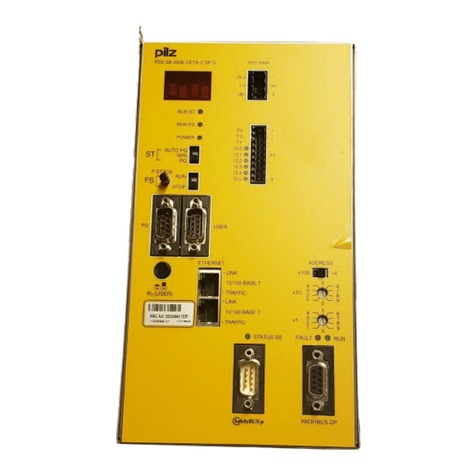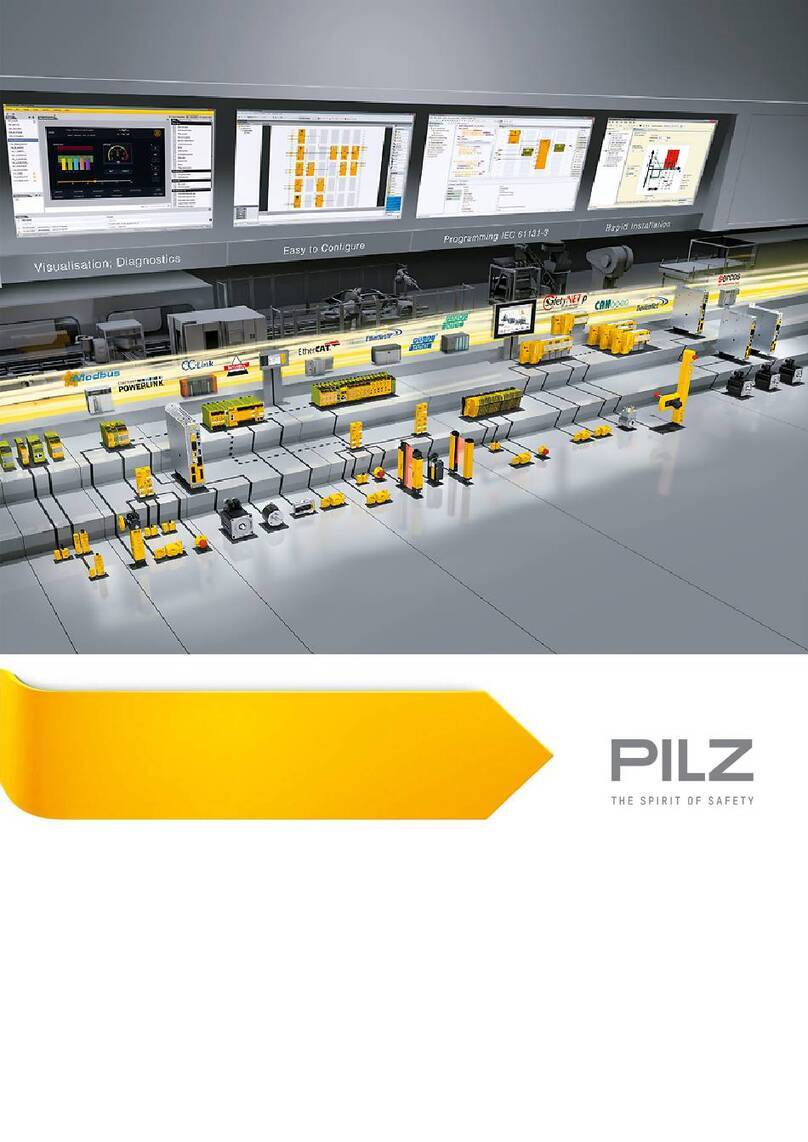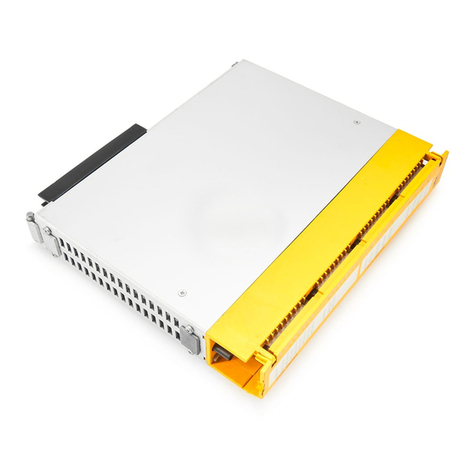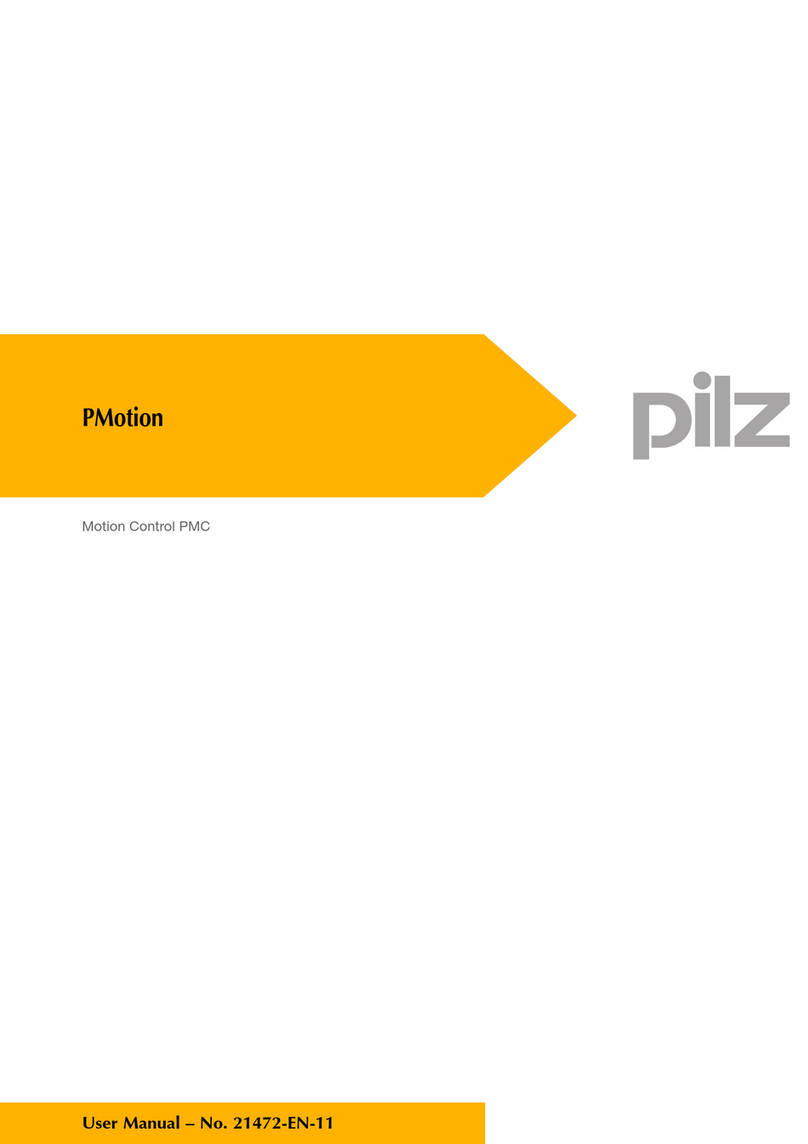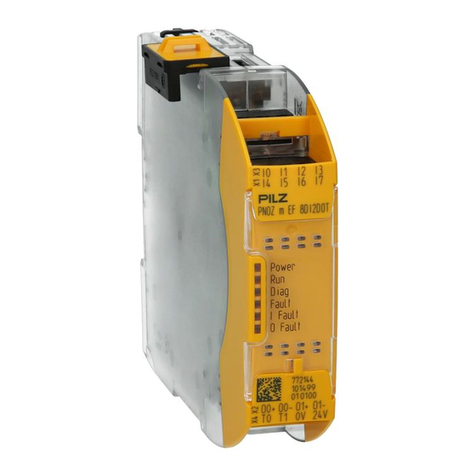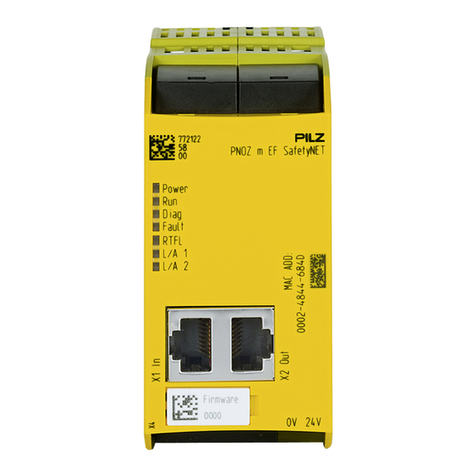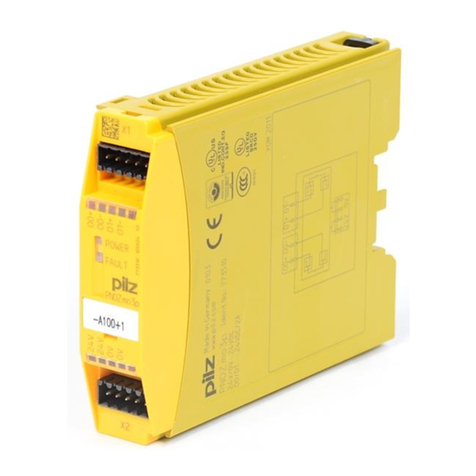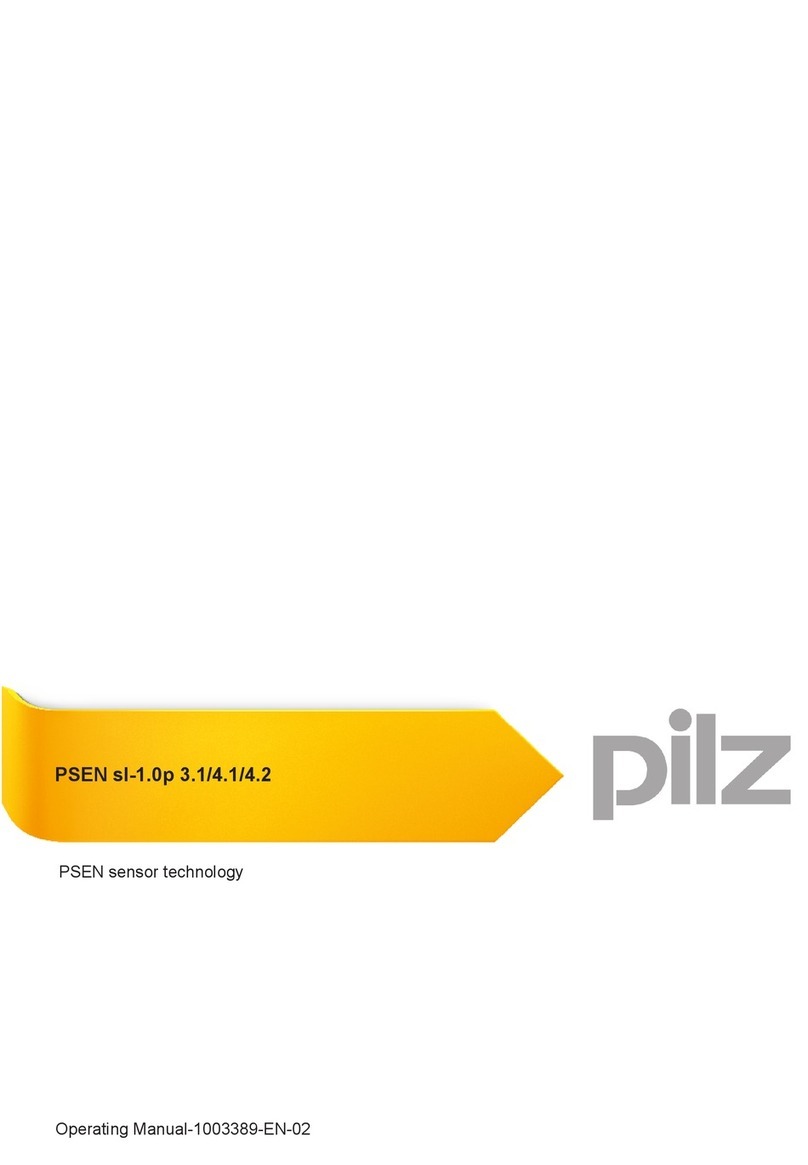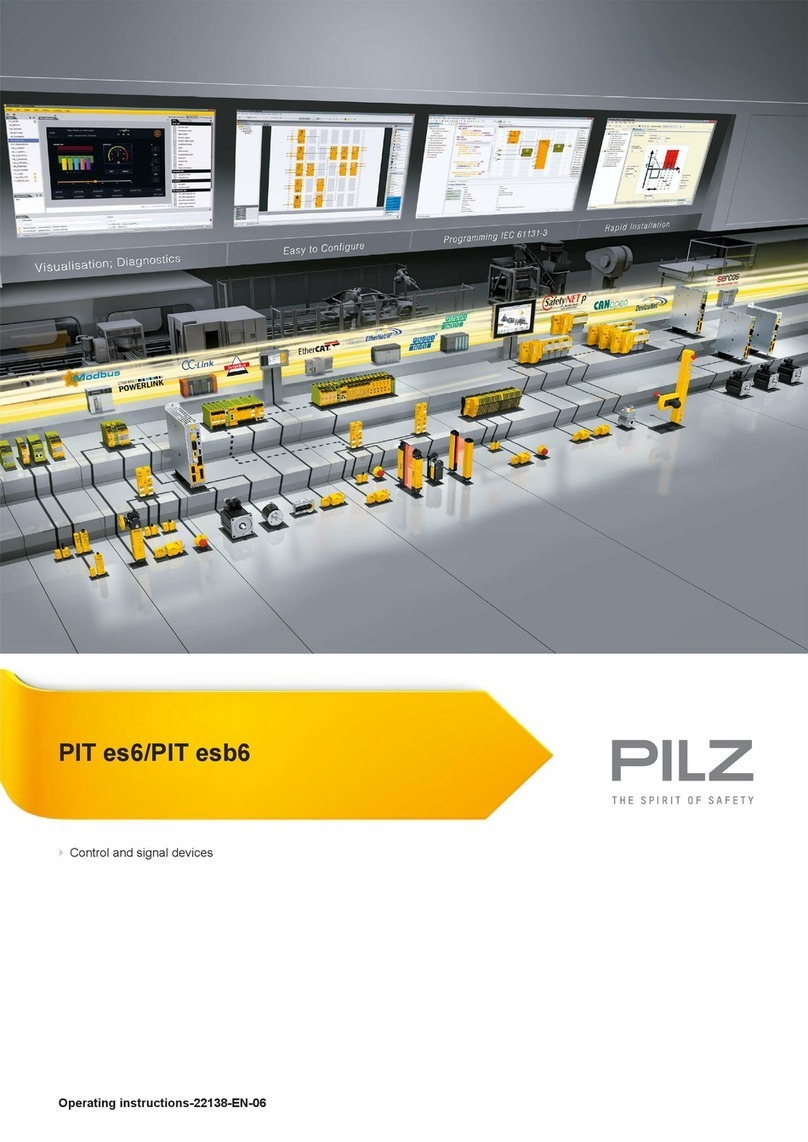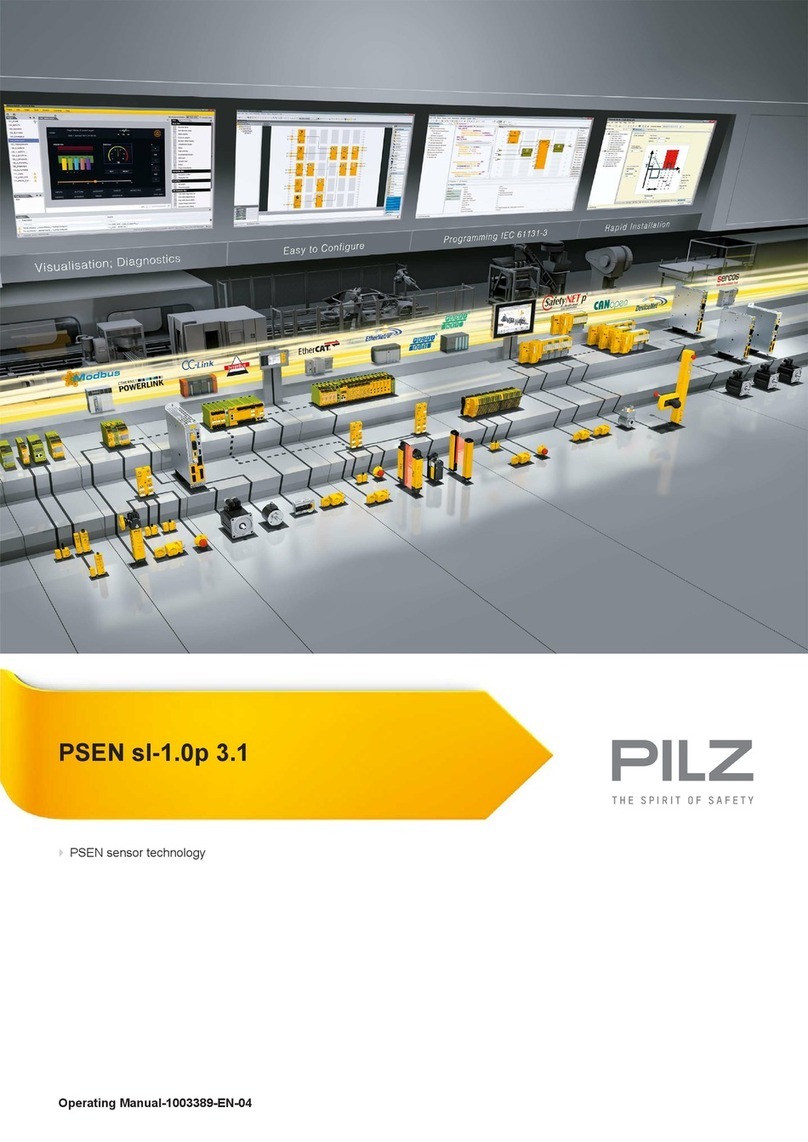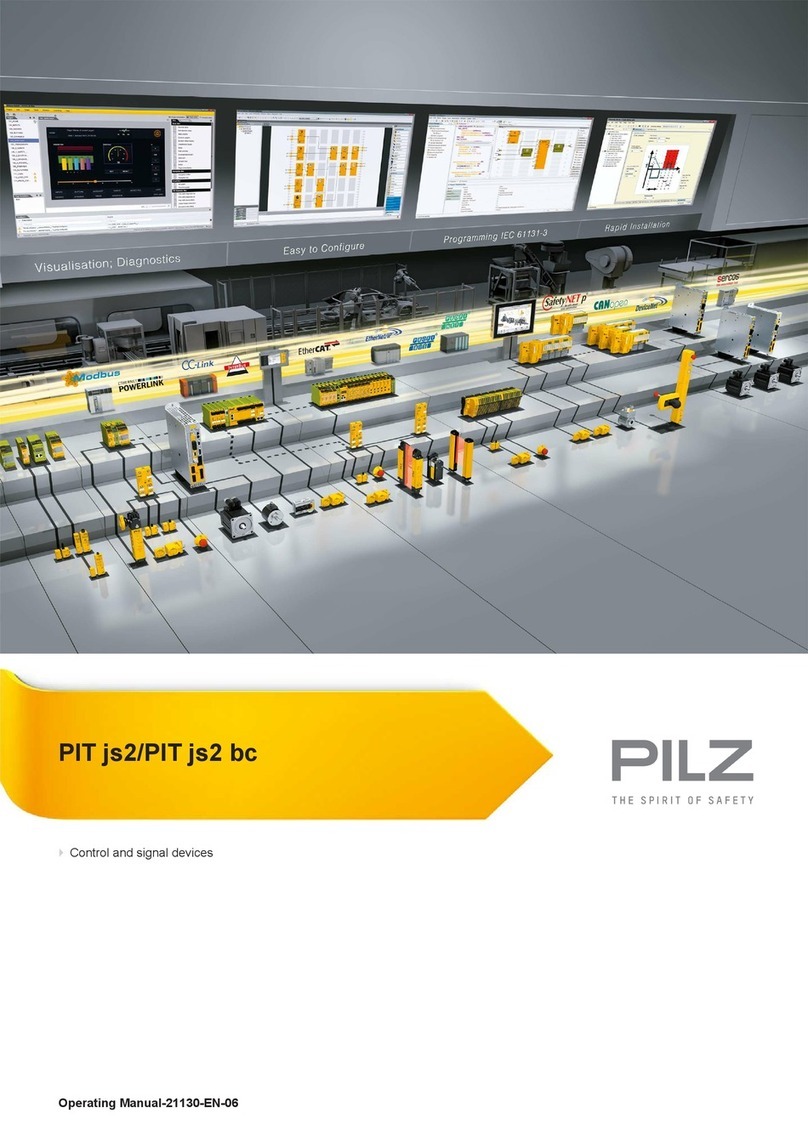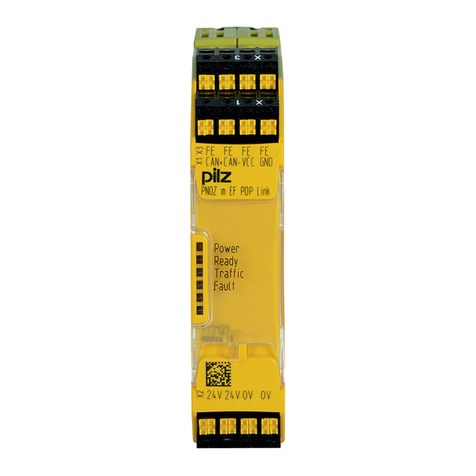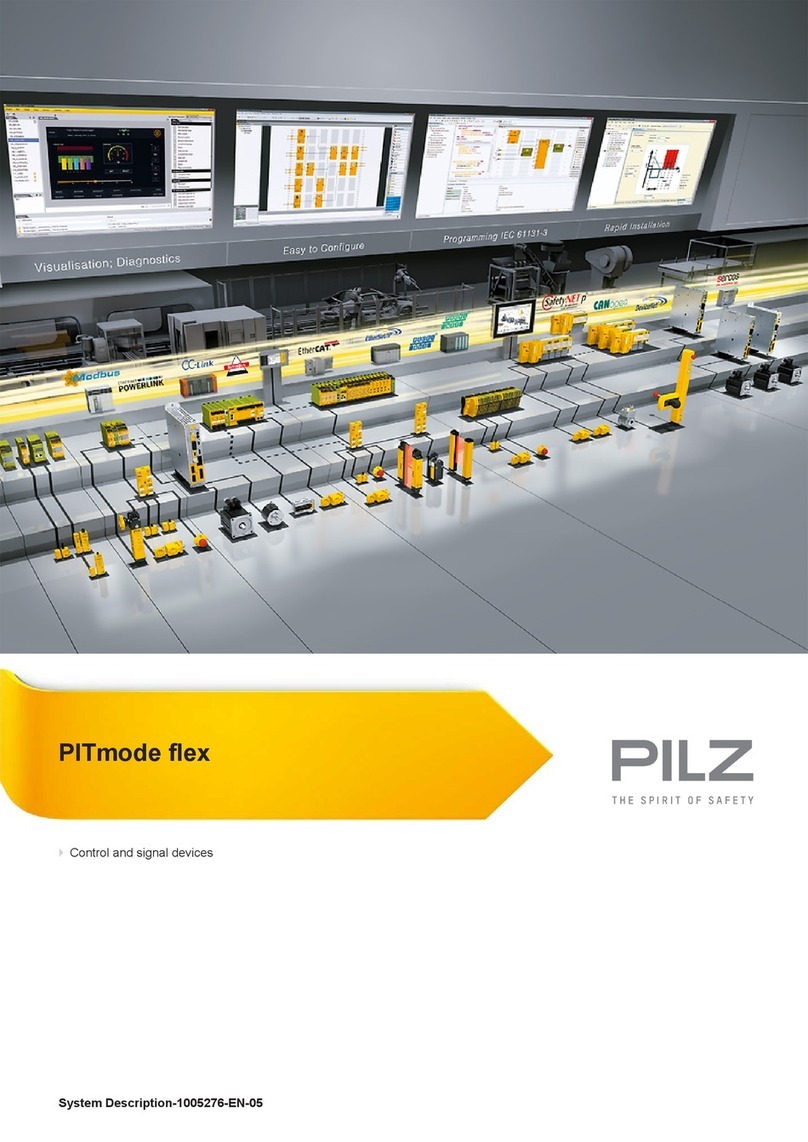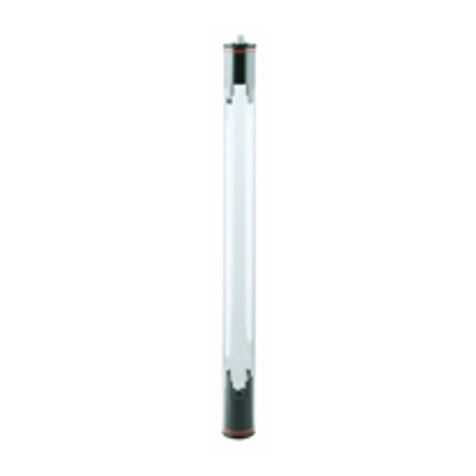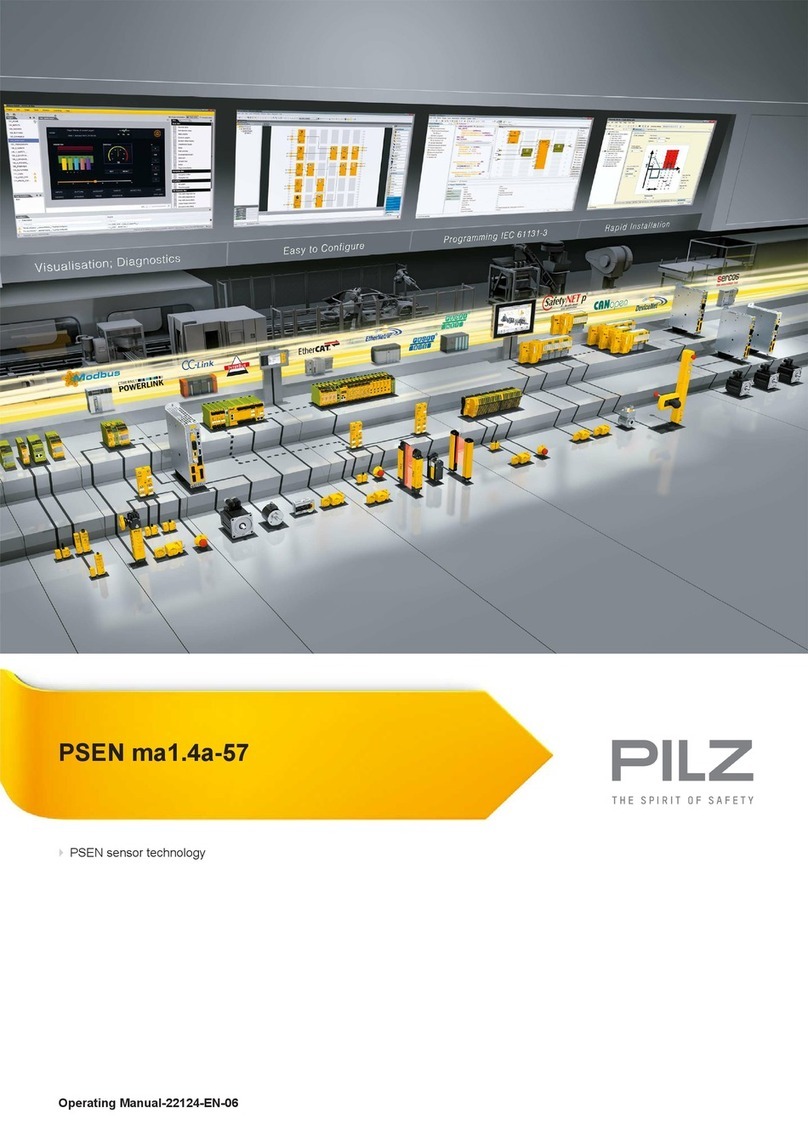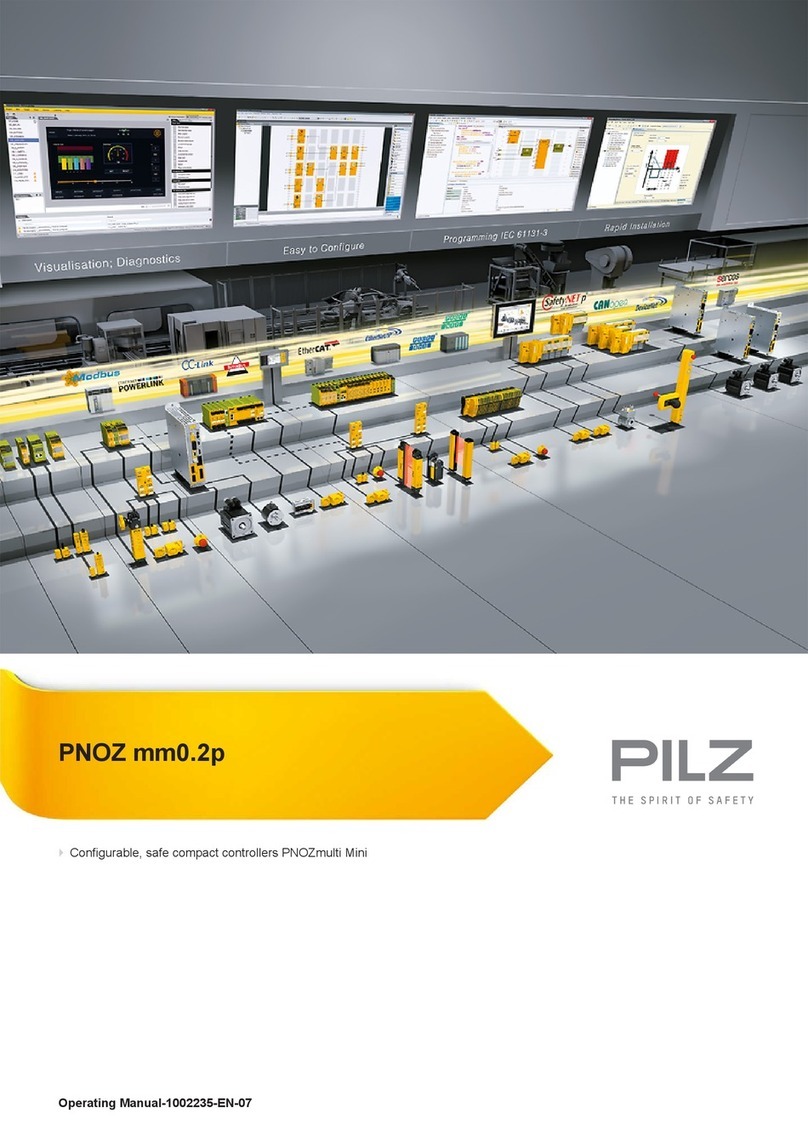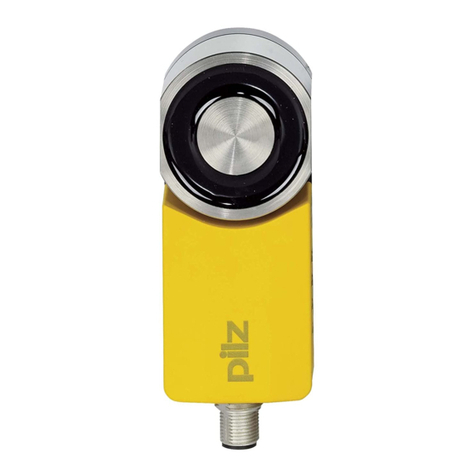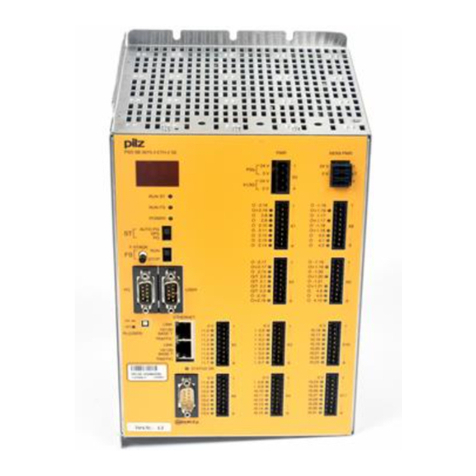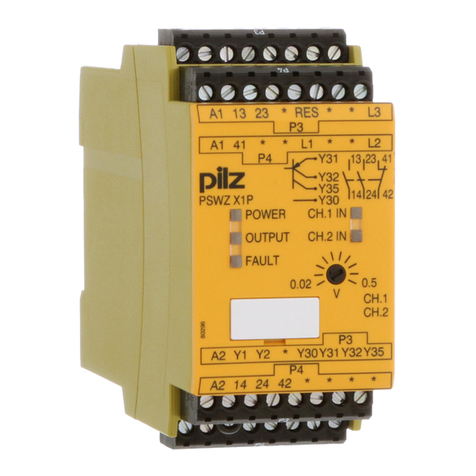
Contents
Operating Manual PNOZ m C0
1006013-EN-02 | 3
1 Introduction ............................................................................................................................5
1.1 Validity of documentation ..........................................................................................................5
1.2 Using the documentation ..........................................................................................................5
1.3 Definition of symbols .................................................................................................................5
1.4 Third-party manufacturer licence information............................................................................6
2 Overview .................................................................................................................................7
2.1 Range........................................................................................................................................7
2.2 Unit features..............................................................................................................................7
2.3 Chip card...................................................................................................................................8
2.4 Front view..................................................................................................................................8
3 Safety ......................................................................................................................................10
3.1 Intended use .............................................................................................................................10
3.2 Applicable documentation .........................................................................................................11
3.3 System requirements ................................................................................................................11
3.4 Safety regulations .....................................................................................................................11
3.4.1 Safety assessment....................................................................................................................11
3.4.2 Use of qualified personnel.........................................................................................................11
3.4.3 Warranty and liability.................................................................................................................11
3.4.4 Disposal ....................................................................................................................................12
3.4.5 For your safety ..........................................................................................................................12
4 Security ...................................................................................................................................13
4.1 Implemented security measures ...............................................................................................13
4.2 Required security measures .....................................................................................................13
5 Function description ..............................................................................................................15
5.1 Integrated protection mechanisms............................................................................................15
5.2 Functions...................................................................................................................................15
5.3 Reaction times ..........................................................................................................................15
5.4 Block diagram ...........................................................................................................................16
5.5 Diagnostics................................................................................................................................16
5.6 Device security..........................................................................................................................16
5.6.1 User management.....................................................................................................................16
5.6.2 Security device key ...................................................................................................................17
6 Installation ..............................................................................................................................19
6.1 Control cabinet installation ........................................................................................................19
6.1.1 Mounting distances ...................................................................................................................20
6.2 Dimensions in mm.....................................................................................................................21
7 Commissioning ......................................................................................................................22
7.1 General wiring guidelines..........................................................................................................22
7.2 Connection ................................................................................................................................22
7.3 Load project from chip card.......................................................................................................24
7.4 Load project via USB port ........................................................................................................24
7.5 Function test during commissioning..........................................................................................24
